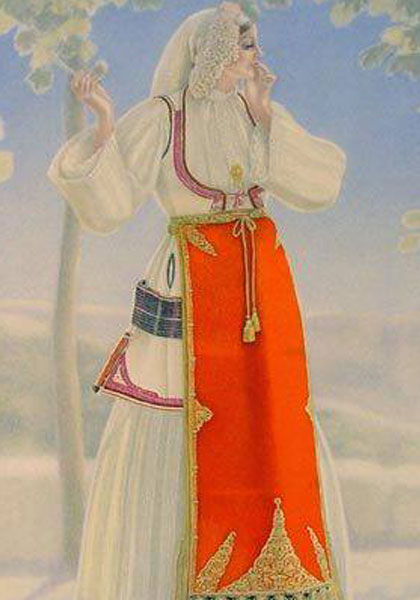(Images: 1. Peasant Woman Desfina, Fokida, 20th Century © Peloponnesian Folklore Foundation
2. Woman's Costume (Desfina). Illustration by Nicolas Sperling
3&4 Peasant women, Delphic Festival; 1920's. Images by Maynard Owen Williams / Wilhelm Tobien.)
The female costume "Desfina"
The costume that prevails today is the simplified form of the costume of Arachova, as established in the early 20th century.
The female costume of Arachova is the traditional female dress of the homonym region found in Central Greece, in the areas of Amfissa, Desfina and Delphi. Main feature is the harmonious combination of various construction materials and delicate stylized embroidery.
Parts of the costume is the petticoat, the shirt, the overcoat "sigouna", the woven belt called "fkas", the apron, the gold "podioschoino", gold handkerchief, socks and headband "gourounotsaroucha".The fez, the braids, the roof , red kerchief and crimson scarf. The jewels are the buckles, chains with talismans, ribbons with gold coins, the folds with pearls and yordani.

(Women costumes from Central Greece & Roumeli by Stamco)










